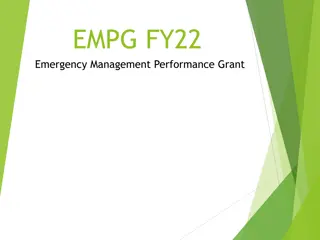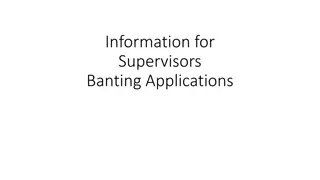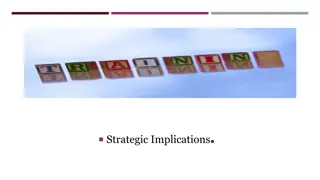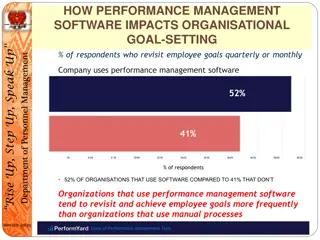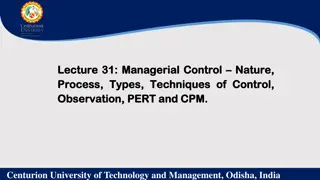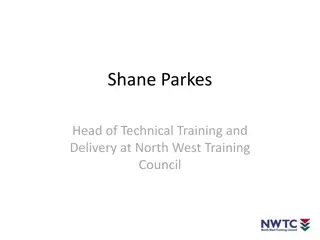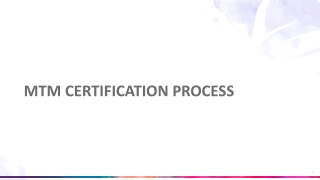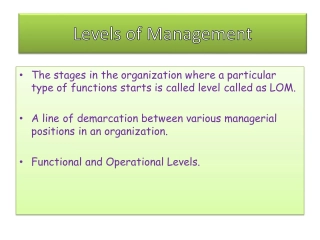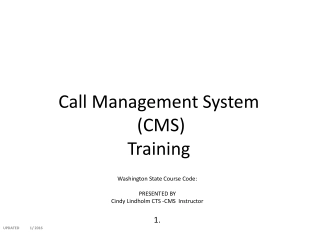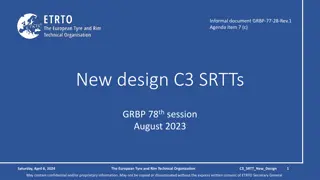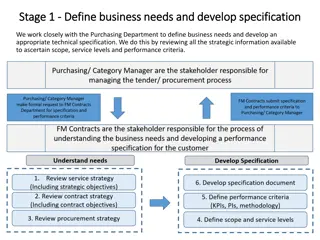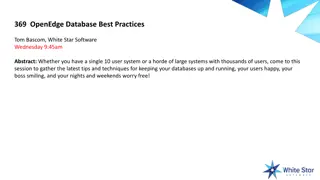Performance Management Training for Supervisors
Explore the key aspects of performance management training for supervisors, focusing on setting expectations, providing feedback, and aligning individual efforts with organizational goals. Learn about performance appraisal vs. management, goal-setting, feedback, and more to foster a successful corporate culture.
Download Presentation
Please find below an Image/Link to download the presentation.
The content on the website is provided AS IS for your information and personal use only. It may not be sold, licensed, or shared on other websites without obtaining consent from the author. Download presentation by click this link. If you encounter any issues during the download, it is possible that the publisher has removed the file from their server.
Presentation Transcript
Performance Management Training for Supervisors
Performance Management Training WELCOME! 2
Introduction Performance management is the broad collection of activities designed to maximize individual and, by extension, organizational performance. It includes setting expectations, measuring employee behaviors and results, providing coaching and feedback, and evaluating performance over time to use in decision-making. The purpose is to align individual efforts to achieve organizational goals. A successful performance management program helps an employer retain talented employees, keep employees engaged, enhance employee learning and build a winning corporate culture. 3
Agenda Performance appraisal versus performance management. Performance management continuum. Setting goals and objectives. Providing continuous feedback. Rating scales. Conducting appraisals. Rater errors. 4
Performance Appraisal versus Performance Management Appraisal One-time event Retrospective Short-term Correction-oriented Assigning ratings Management Ongoing Prospective Long-term Progress steps Planning/goal-setting 5
The Performance Management Continuum Performance Planning and Goal Setting Performance Review Ongoing Feedback Evaluation of Performance Employee Input 6
Setting Goals and Objectives Define and establish specific goals and objectives for the review period. Use SMART goal criteria: Specific Measurable Achievable Relevant Time-bound 7
Setting Goals and Objectives (cont.) Align goals and objectives with the organization s business plan. Establish mutually agreed-upon goals between the employee and the manager. Establish milestone review dates. Communicate changes or redirection of goals and objectives in a timely manner. 8
Providing Continuous Feedback Effective performance management systems include a process for continuous feedback. Establish milestone dates for periodic monitoring of performance objectives and progress reports in objective terms. Be aware that goals or objectives may need to be changed or retargeted during the review period. Maintain open communication channels to ensure that issues are elevated quickly and resolved timely. Coach, assist and/or redirect employees who request assistance and those who are failing to meet standards. 10
Rating Scales Rating scales can vary from alphabetic and numeric to those with descriptive phrases (e.g., "Meets Expectations"). The following is a description of the scale used in our organization: [insert details regarding the rating scale used] 12
Conducting Appraisals To ensure an effective performance appraisal meeting, take the following steps: Be prepared by collecting and reviewing performance notes, feedback and other data. Request self-appraisals from employees to be completed two weeks prior to the appraisal meeting. Choose a private and comfortable space for the meeting and schedule sufficient time to focus on the review. Encourage open dialogue regarding performance levels, lessons learned, ongoing progress, and goals and objectives for the next review period. 14
Rater Errors Managers sometimes make errors in judgement due to their own perceptions and biases. Some common rater errors include the following: Halo effect - the individual s performance is completely appraised based on a perceived positive quality, feature or trait (the employee can do no wrong). Horn effect - the individual s performance is completely appraised based on a perceived negative quality or feature (the employee can only do wrong). Central tendency - lack of rating differentiation between employees. Leniency - avoidance of honest ratings to avoid conflict. Recency effect - narrow focus on recent events rather than the entire performance period. Similarity/ like me - favorable ratings given to employees who have similar values or interests to the rater. 16
Rater Errors (cont.) Tips to avoid rater errors: Make objective statements Jorge arrived late on four occasions rather than Jorge is always late. Consider the totality of the employee s performance over the entire review period. Make and keep adequate records with specific examples. Establish milestones for progress reviews. Seek input from other managers or human resources. Participate in an organization-wide calibration process. 17
Summary Performance appraisal and performance management differ in form and frequency of occurrence. It is important to plan for performance appraisals and establish an appropriate environment for them. Develop ongoing performance communication by recognizing performance management is a continuing process. Define and establish specific goals and objectives using SMART principles. Rater errors should be identified and avoided. 19
Training Evaluation Please complete the training evaluation sheet included in the handouts. Thank you for your interest and attention! 21












